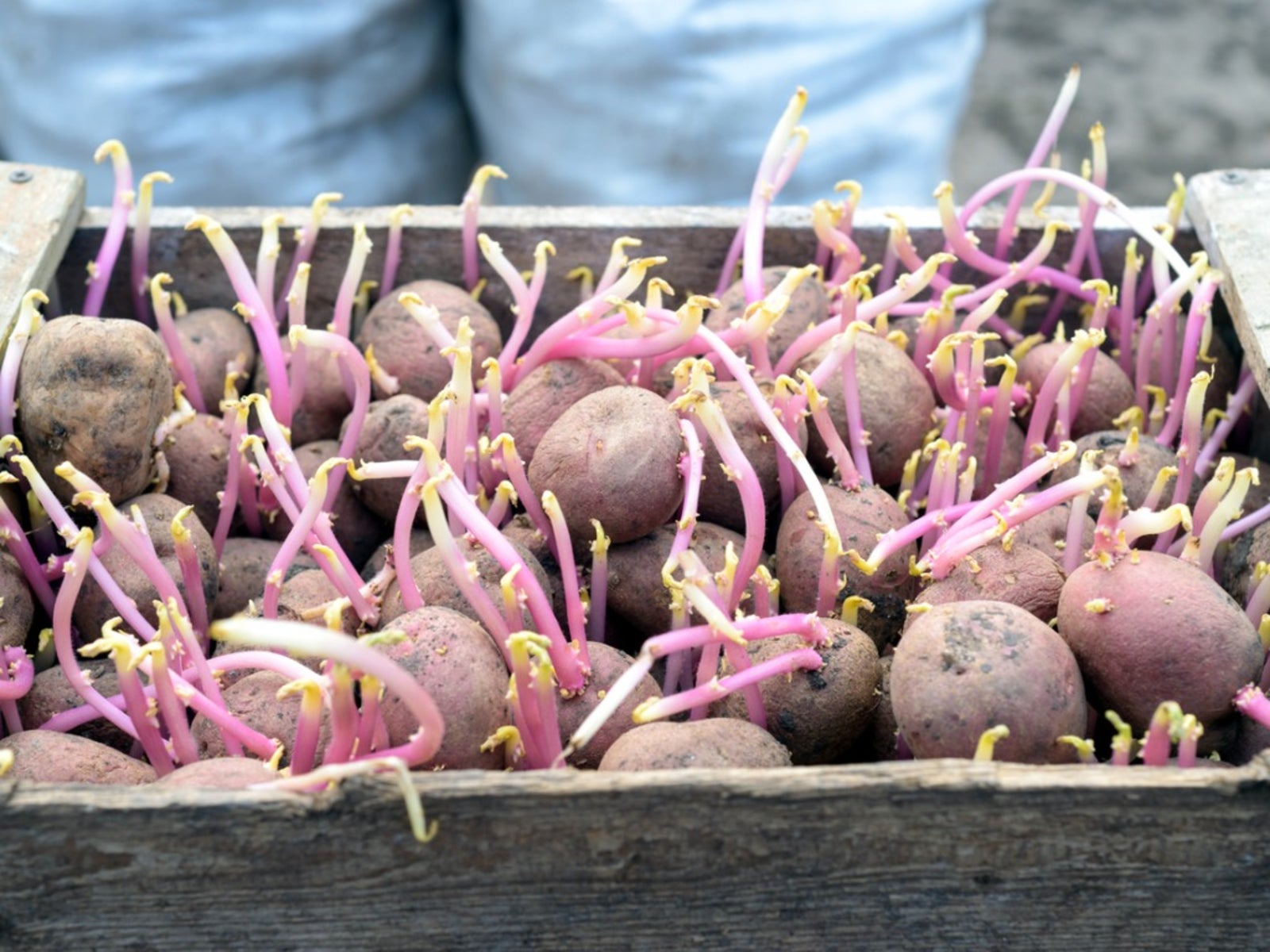Tips On How To Grow Seed Potatoes In The Garden


Potatoes fresh from the ground is a great treat for the home gardener. But, before you can harvest potatoes, you need to plant seed potatoes. Growing seed potatoes is easy and affordable, but there are a few things you need to know about planting seed potatoes that will make sure you are successful.
Choosing Seed Potatoes
When you go to the grocery store, there are only about a half dozen different kinds of potatoes to choose from, but when you plant seed potatoes, you can choose from over 100 different varieties of potatoes.
It is best to do some research about what kinds of potatoes grow best in your area and have the flavors and textures that you will like. Where you get your seed potatoes is important. While it may seem like a good idea to buy some potatoes from the grocery store and use them as seed potatoes, the potatoes in the grocery store have been treated with chemicals that help prevent them from sprouting, and they have not been tested for common seed potatoes diseases. It is best to buy seed potatoes from a reputable seed potato dealer.
These companies will sell seed potatoes that are certified disease free and will have treated the seed potatoes to help prevent fungus and rot. Some gardeners like to save seed potatoes from year to year. This practice should be done at your own risk. Seed potatoes can sometimes carry over soil borne diseases and, without being able to test your seed potatoes as seed companies can, may put your entire future harvest at risk.
How to Cut Seed Potatoes
Cutting seed potatoes is not necessary to do before planting them. Whether to cut them or not is a personal choice for a home gardener. On one hand, cutting your seed potatoes will help you to stretch your seed potatoes a bit so that you can grow more potatoes plants but, on the other hand, cutting seed potatoes increases the chances of disease and rot.
If you decide to cut your seed potatoes, cut them into pieces so that each piece has at least one eye (though more than one eye per piece is fine too), and is roughly at least an ounce (28 g.). Then allow the seed potatoes pieces to cure in a cool but humid place for 2-3 days. You can also sprinkle the cut seed potatoes with an anti-fungal powder at this time. After curing, they should be planted as soon as possible.
How to Plant Seed Potatoes
Planting seed potatoes at the right time is important. Seed potatoes growing in soil that is too cold and wet may rot while potatoes that grow in soil that is too warm, may not produce well. It is best to plant seed potatoes after the chance of hard frost has past, but while you are still experiencing light frosts.
Gardening tips, videos, info and more delivered right to your inbox!
Sign up for the Gardening Know How newsletter today and receive a free copy of our e-book "How to Grow Delicious Tomatoes".
If you are concerned that the weather may get too warm or too cold too fast in your area, you can try chitting your seed potatoes to help get a jump on the season. Plant the seed potatoes about 2-3 inches (5-7.5 cm.) deep and about 24 inches (60 cm.) apart. Light frost may kill any new growth above the soil line once they sprout, but don't panic.
This will not kill the potato plant and the potatoes will regrow their foliage quickly. Now that you know these few tips on cutting and planting seed potatoes, you can look forward to a successful potato harvest.

Heather Rhoades founded Gardening Know How in 2007. She holds degrees from Cleveland State University and Northern Kentucky University. She is an avid gardener with a passion for community, and is a recipient of the Master Gardeners of Ohio Lifetime Achievement Award.
-
 Looking For Plants To Give You The Soft And Fuzzies? Try These 5 Fuzzy Leaf Plant Options
Looking For Plants To Give You The Soft And Fuzzies? Try These 5 Fuzzy Leaf Plant OptionsLovers of texture, drama, silver foliage and tactile plants will adore these special sensory garden additions. These fuzzy leaf plant options will leave you all aglow
By Susan Albert
-
 Get Ready For A Summer Of Hummers! Grow These Full Sun Hummingbird Plants and Flowers
Get Ready For A Summer Of Hummers! Grow These Full Sun Hummingbird Plants and FlowersIf you’re lucky enough to enjoy a sunny backyard, make sure you are maxing out on your pollinator opportunities and grow these full sun hummingbird plants and flowers
By Tonya Barnett